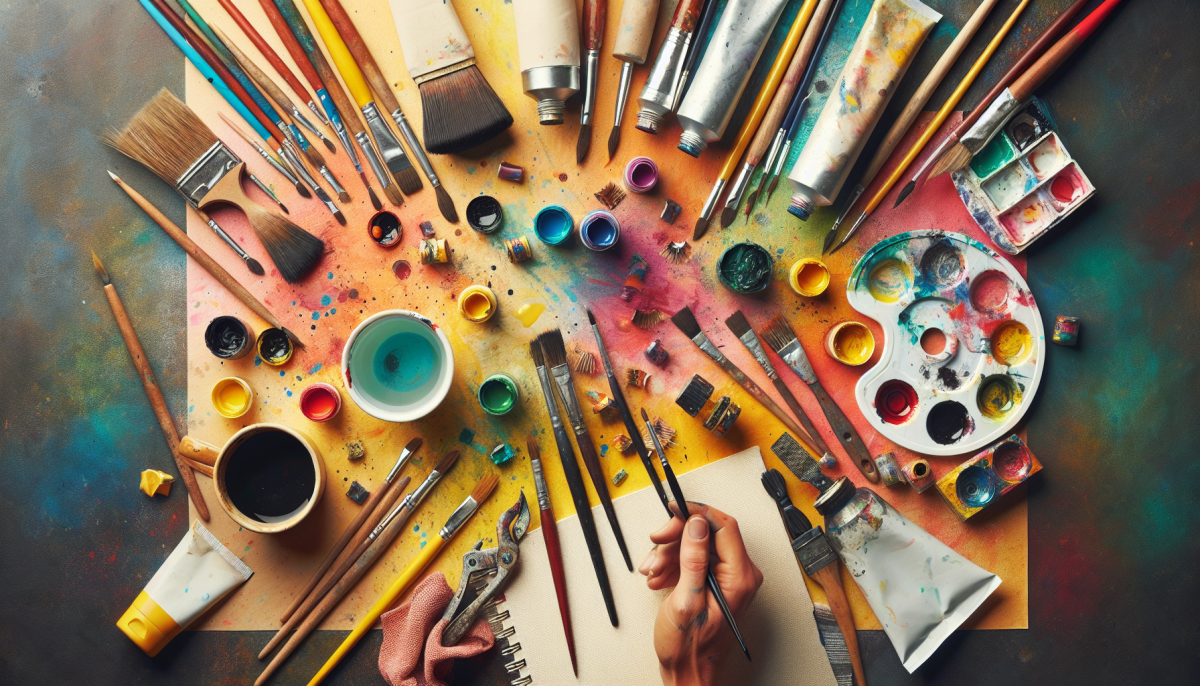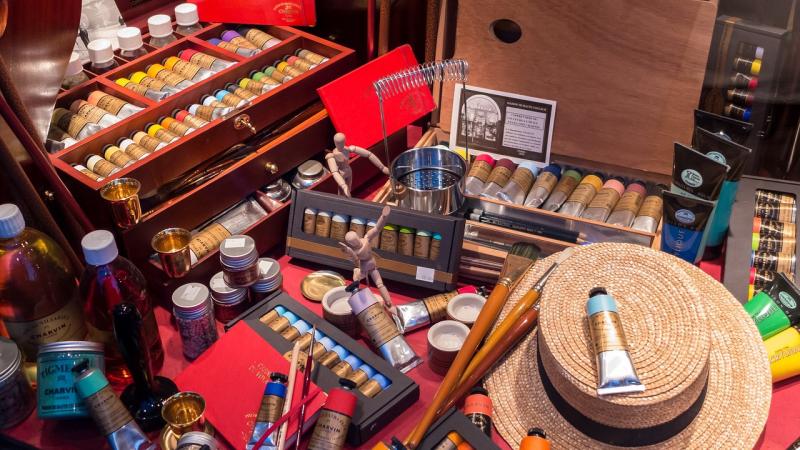When it comes to art supplies, proper storage is key to keeping them in top condition. Whether you’re using paints, pencils, or brushes, a safe storage solution can extend the life of your materials and enhance your creative experience. Start by organizing your supplies based on type and usage. For instance, keep all your paints together, and separate your brushes by size and shape. This organization makes it easier to find what you need when inspiration strikes.
Consider using airtight containers for items that are sensitive to moisture, like certain paints and pastels. Even a small amount of humidity can ruin your supplies, causing them to dry out or become unusable. Similarly, for markers and pens, store them horizontally to prevent the ink from drying out on one end. Look for clear bins or drawers, as they allow you to see your supplies at a glance, making it easier to grab what you need without digging around.
Temperature can also impact your art supplies. Ideally, store them in a cool, dry place away from direct sunlight. Heat and sunlight can alter the chemical composition of your materials, especially paints, and cause them to change color or texture. A dedicated shelf or cabinet can be a great option for storing everything from canvases to sketchbooks, ensuring they remain in a stable environment.
Lastly, don’t forget about labeling! Clearly labeling your containers can save you time and help you know where everything is at a glance. Whether you choose to use a label maker or simple sticky notes, clear labels can help keep your workspace organized and efficient. Applying these simple tips will help ensure that your art supplies remain in excellent condition, allowing you to focus on what you love—creating art!
Cleaning Your Brushes and Tools
Keeping your brushes and tools clean is crucial for maintaining their quality and extending their lifespan. Every time you finish a painting session, it’s essential to clean your brushes thoroughly. This prevents dried paint from clumping and ruining the bristles. For acrylic paints, rinse your brushes under warm water immediately after use, gently working the paint out with your fingers or a gentle brush soap. For oil paints, use a solvent like mineral spirits to clean the brushes before washing them with soapy water.
Don't forget about your other tools! Palettes, knives, and sponges also need proper cleaning. For plastic palettes, scrape off any excess paint and then wash with warm, soapy water. If the paint has dried, use a palette knife to scrape it off gently. Cleaning tools like knives or spatulas should also be done right after use to prevent paint buildup. A quick rinse with water or solvent will do the trick.
For sponge brushes, rinse them out thoroughly under running water to remove as much paint as possible. You can also give them a gentle wash with soap if needed. Make sure they are completely dry before storing them away to prevent mildew. Additionally, ensure that your tools are stored properly. Keep your brushes upright in a holder, with bristles facing up, to maintain their shape. This simple practice can make a significant difference in how well your brushes perform in the future.
Lastly, remember to check on your tools periodically. Even with the best care, brushes can wear down over time. Regularly inspect your brushes for frayed bristles or chipped handles, and replace them when necessary. Investing time in cleaning and maintaining your art supplies will lead to better results in your artwork and a more enjoyable painting experience.
Organizing Your Workspace Effectively
Creating a well-organized workspace is crucial for any artist. A clutter-free area not only enhances creativity but also makes it easier to find the supplies you need when inspiration strikes. Start by decluttering your workspace. Remove items that you don’t regularly use, as well as any distractions. This will help you focus better on your art and enjoy the process.
Next, consider utilizing storage solutions that suit your needs. Shelving units and drawers can keep your supplies neatly arranged and easily accessible. Group similar items together, such as paints, brushes, and sketching materials. Labeling boxes or containers can also save time when searching for specific tools or colors. Transparency is key—clear containers allow you to see what you have at a glance.
Don’t forget about your workspace layout. Position your essentials within easy reach and ensure you have ample lighting for detailed work. A comfortable chair and a well-placed table can make a significant difference in your creative flow. Experiment with different setups until you find one that feels right. Adjusting your environment to suit your artistic style will make your creative sessions more enjoyable.
Lastly, make it a habit to clean your workspace after each session. This not only keeps the area tidy but also prepares you for the next time you create. Regular organization sessions can help you assess your supplies, restock where necessary, and dispose of what you no longer need, keeping your artistic space fresh and inviting.
Managing Materials for Longer Life
Managing your art materials properly can greatly extend their lifespan, allowing you to create more without the constant need to restock. One of the simplest ways to achieve this is by organizing your supplies. Consider using labeled containers or shelves to keep everything in its place. This way, you can quickly find what you need without rummaging through disorganized piles that could lead to accidental damage.
Temperature and humidity play a big role in the longevity of your art supplies. Try to store your materials in a cool, dry place, away from direct sunlight. For example, a closet or a drawer can protect your supplies from harsh environmental changes. Additionally, consistently checking the conditions of your storage area ensures that you maintain a stable environment, preventing spoilage or degradation of materials like paints and papers.
Regular maintenance is key to managing your art supplies effectively. Clean your brushes after every use to prevent paint from drying in the bristles, which can ruin them. For other tools like knives or palettes, a quick wipe down after each session can keep them in good shape. This small effort can save you money in the long run and keep your creative process flowing without interruptions.
Finally, don’t forget to keep an inventory of your supplies. By noting what you have and what needs to be replaced, you can avoid excess waste and track when materials start to expire. One easy method is to create a simple checklist or a spreadsheet. This will help you stay organized and ensure you always have what you need to bring your artistic visions to life.



